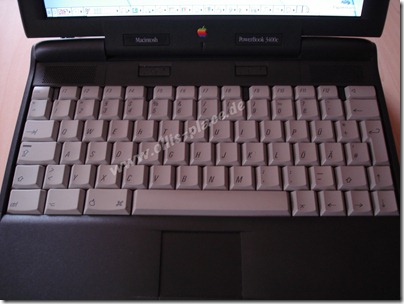
The 250 MHz and 292 MHz models shipped with 1 MB of cache. The 233 MHz model was sometimes nicknamed Mainstreet, as it lacked L2 cache, making it far slower than the other two in the lineup. It also came in three CPU speeds: 233 MHz, 250 MHz, and 292 MHz. This change meant that CD and DVD recorders designed for Wintel machines could more easily be used in this computer, often at a price far less than those manufactured by Apple.

The Wallstreet was the first PowerBook to use industry-standard ATA optical drives. The new PowerBooks, code-named Wallstreet, came in three screen sizes: a 12" passive matrix LCD, a 13.3" TFT LCD, and a 14.1" TFT LCD. The machine was completely redesigned with a new case that was lighter and more rounded than the previous PowerBook G3 however, it was still an Old World ROM Macintosh. The second generation of PowerBook G3s, now called the PowerBook G3 Series, was introduced in May 1998. The Kanga was also notably smaller in depth and width than the subsequent Wallstreet Powerbooks, and the Kanga remained the smallest-when-open G3 laptop until the debut of the Apple iBook some years later. Nevertheless, many people chose to purchase a Kanga to continue using their interchangeable expansion bay modules, batteries, and other peripherals from the Powerbook 190, 53 models. As a result, the Kanga has the dubious distinction of being Apple's most quickly deprecated PowerBook. The Kanga was on the market for less than 5 months, and is largely regarded as a stopgap system that allowed Apple to ship G3 PowerBooks sooner, while Apple prepared its more revolutionary PowerBook G3 Series.
#XPOSTFACTO MAC MAC OS X#
It is the only G3 system that is not officially compatible with Mac OS X (though various methods not sanctioned by Apple can be used to install OS X). This first PowerBook G3 shipped with a 250 MHz G3 processor and a 12.1" TFT SVGA LCD. The G3 made the Kanga more than twice as fast as a 3400c, and the improved graphics controller allowed it to refresh the screen 74 percent faster. Other changes to the motherboard included doubling the on-board RAM from 16 MB to 32 MB, and a faster version of the on-board Chips and Technologies graphics controller. The motherboard was upclocked from 40 MHz to 50 MHz, resulting in some incompatibility with older 3400 RAM modules. It used the same case as the 3400c, and a very similar motherboard. This model was based on the PowerBook 3400c, and was unofficially known as the PowerBook 3500.

At the time of its introduction, the PowerBook G3 was advertised as the fastest notebook computer available (a title formerly held by its predecessor, the 240 MHz PPC-603ev-based PowerBook 3400c).

The first Macintosh PowerBook G3, code-named "Kanga," was introduced in November 1997. The G3 was the first black Apple laptop, and was succeeded in this by the black MacBook in 2006. The PowerBook G3 was succeeded by the PowerBook G4.
#XPOSTFACTO MAC SERIES#
It was the first laptop to use the PowerPC G3 (PPC740/750) series of microprocessors, and was marketed as the fastest laptop in the world for its entire production run. The PowerBook G3 is a series of laptop Macintosh personal computers designed, manufactured, and sold by Apple Computer from 1997 to 2001.


 0 kommentar(er)
0 kommentar(er)
